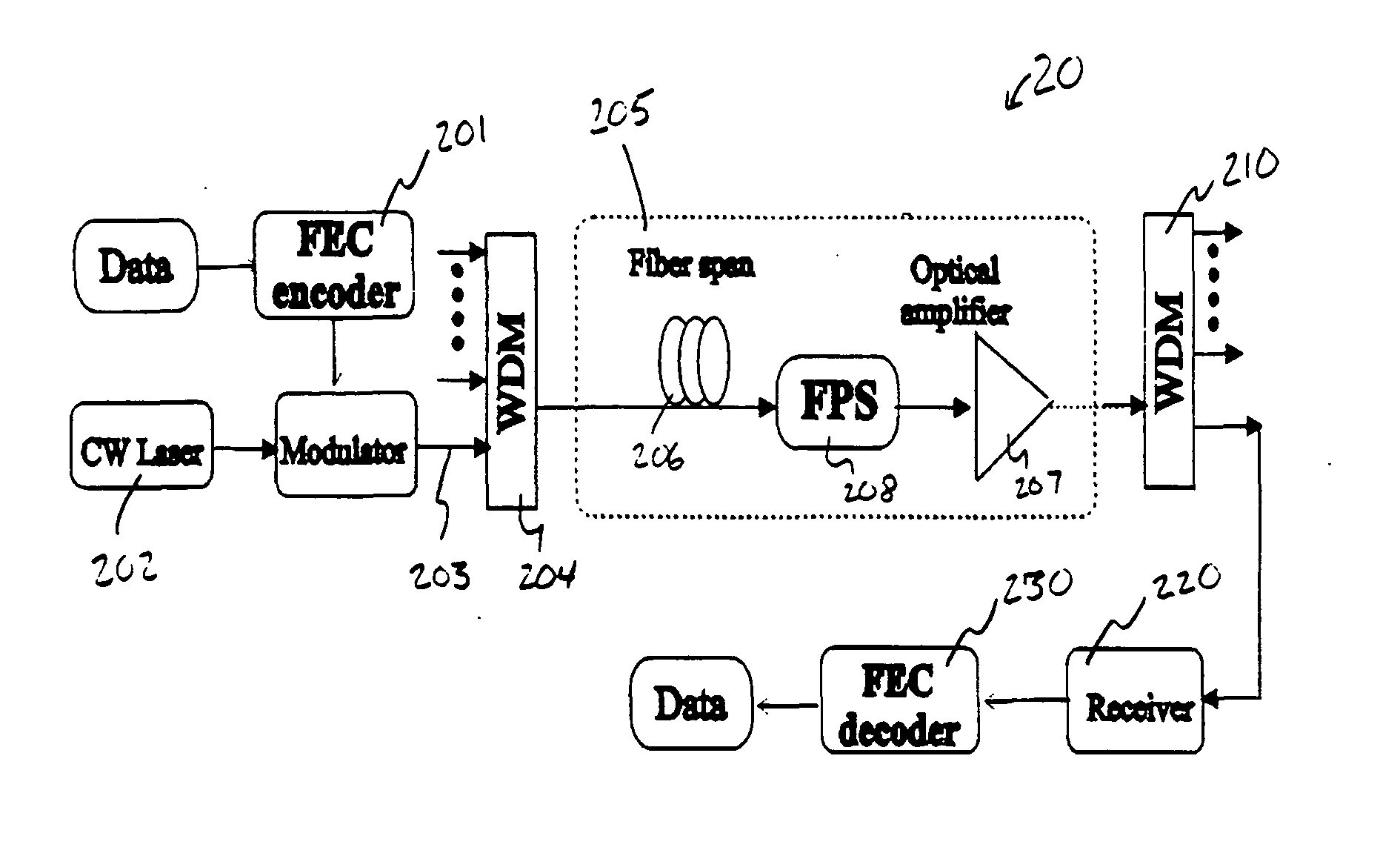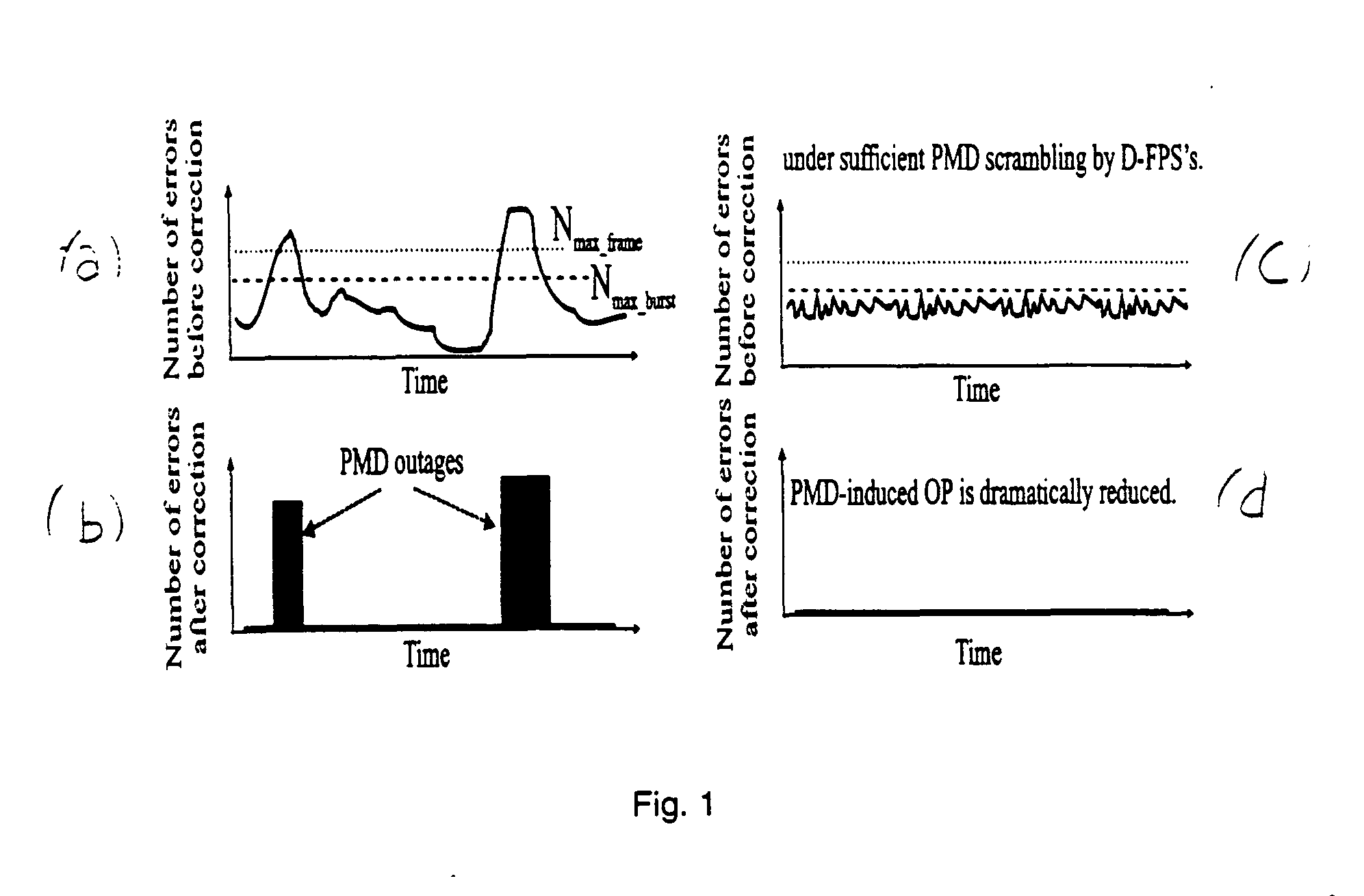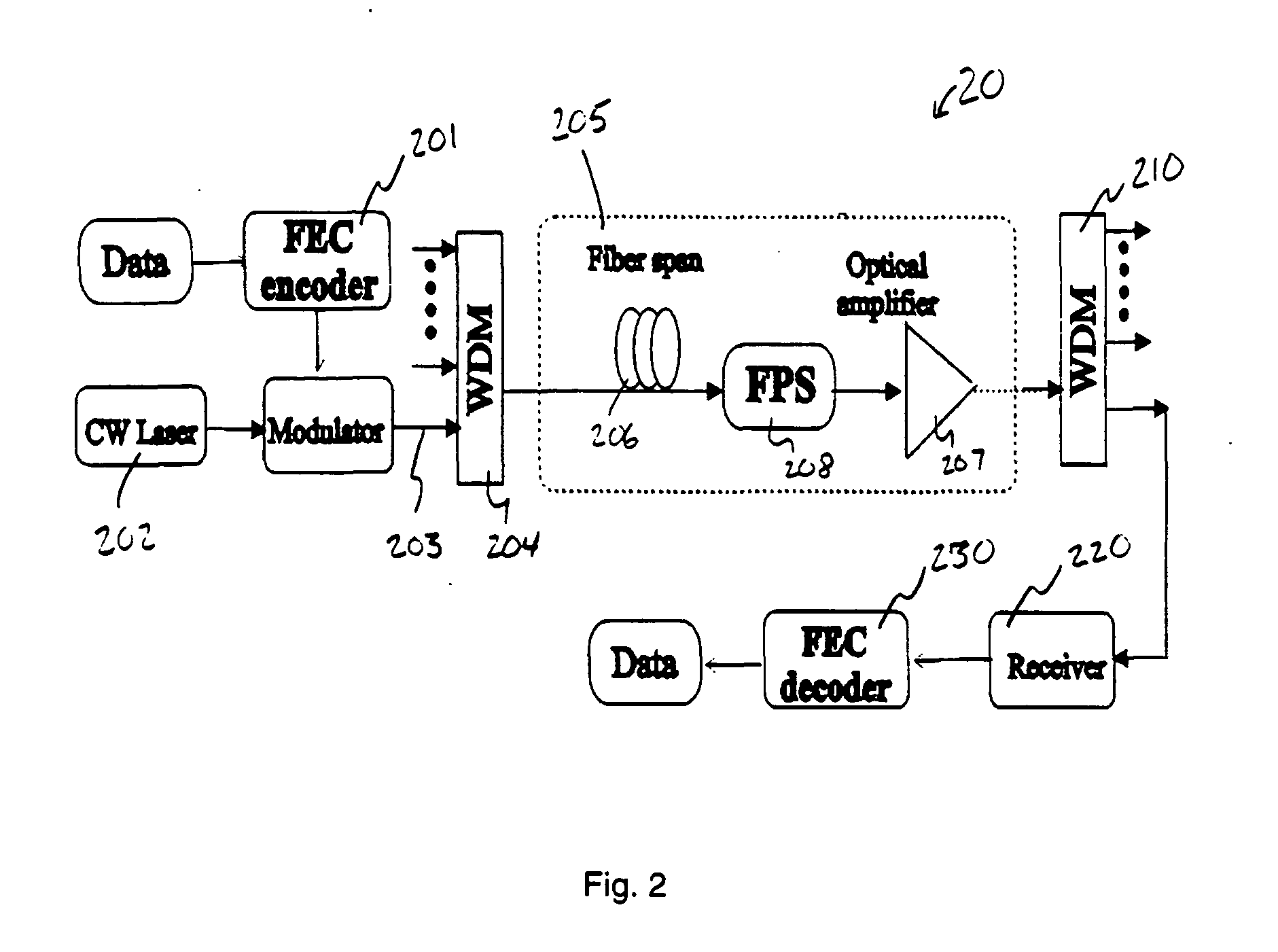System and method for multi-channel mitigation of PMD/PDL/PDG
- Summary
- Abstract
- Description
- Claims
- Application Information
AI Technical Summary
Benefits of technology
Problems solved by technology
Method used
Image
Examples
Embodiment Construction
One aspect of the present invention proposes the use of FEC in conjunction with fast polarization scrambling to change the transmission of a link between at least two states of polarization during each FEC burst-error-correcting period (BECP). By changing the link PMD at least once during each BECP the PMD induced “outages” are effectively limited to last for a period that is shorter than the correcting period, thus the FEC can effectively correct the dominating errors that occurred during the outages, and thereby improve system tolerance to PMD and prevent system outage, simultaneously for all wavelength channels FIGS. 1a-d illustrate a working principle of present invention. FIGS. 1a-b show the case without D-FPSs. As shown in FIGS. 1a-b, PMD occasionally causes severe signal waveform distortion, which results in consecutive or very frequent errors. Such PMD-induced distortion can last from milliseconds up to minutes.
For any given FEC code, there is a maximum number of correcta...
PUM
 Login to View More
Login to View More Abstract
Description
Claims
Application Information
 Login to View More
Login to View More - R&D
- Intellectual Property
- Life Sciences
- Materials
- Tech Scout
- Unparalleled Data Quality
- Higher Quality Content
- 60% Fewer Hallucinations
Browse by: Latest US Patents, China's latest patents, Technical Efficacy Thesaurus, Application Domain, Technology Topic, Popular Technical Reports.
© 2025 PatSnap. All rights reserved.Legal|Privacy policy|Modern Slavery Act Transparency Statement|Sitemap|About US| Contact US: help@patsnap.com



